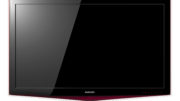Let’s say you have a larger yacht, large enough to support a satellite dish. Let’s say you want to sail it throughout the Caribbean or down to the northern coast of South America. At some point you’ll lose the ability to watch US satellite TV. I suppose this is not the sort of problem everyone has. But it’s still something to talk about.
How far offshore can you get satellite TV service?
In general, you can get satellite TV service about 50 miles offshore (or over the border, if you’re in Canada or Mexico.) But that’s not a hard and fast rule. There are some pockets where you can get US satellite TV 100 miles or more offshore. You can find some maps from the marine satellite companies that can give you a rough estimate of where the service ends. But, these are really general and they depend on your having good weather and a fairly large dish.
The official word from satellite companies is that their service ends right at the US border. In order to understand why, you need to understand both the technology and the policy. It’s a pretty confusing set of ideas, but let’s work together to try to make sense of it.
Technology
All US satellite services come from, well, satellites. I guess that’s pretty obvious. A satellite is like a flashlight, sending signals out in an ever-expanding circle. But, US satellite coverage. It’s vaguely the same shape as the US itself. That means technically all satellite broadcasts are spot beams.
A spot beam is a satellite broadast that has been focused on a particular area. (Read more about that here.) As satellite enthusiasts, we tend to use the term “spot beam” to refer to a satellite broadcast limited to the area around one city. We use the term “CONUS” (Continental United States) to refer to the transmissions that cover the entire country. But, really the CONUS beams are really big spot beams. They’re designed to stop at the border, rather than being one big circle.
Less signal for Canada means more signal for you
Sorry, I don’t mean to deprive Canada of US satellite TV. But in focusing the beam so that it covers only the US, it’s possible to fine=tune the signal so it works better for the people who are actually going to get the service. Creating a spot beam is a matter of focusing the beam tightly and a more tightly focused beam is stronger. There’s no need to send signal up to the Northern Territories, and the folks in the US benefit.
But you can’t stop right at the border
If you shine a flashlight at the wall, even a focusable one, you’ll see the edge isn’t super sharp. It’s a little bit fuzzy, even from a short distance. Now imagine how fuzzy that would be if you shone that light from 22,000 miles away. That’s why you can’t have a signal that stops at the border. The signal has to be strong enough to be used at the border, and that means it spills over into other countries and over the water. It just can’t be helped.
Policy
It may not seem like it, but there are international laws that are followed all over the world. One big group of them concerns broadcasting. Different countries respect each other’s broadcasting plans. If they didn’t, it would be a real mess. You’d have conflicting broadcasts that canceled each other out and no one would be able to receive anything.
Two of the most important parts of these laws would seem to contradict each other. They say that you can’t broadcast into another country on purpose, and they also say that it can’t be helped.
Broadcasts from another country
Well, I should back up a little here. It’s technically not illegal to broadcast into another country. It’s done all the time. Radio stations just over the Mexican border send music into adjacent cities, for example. The Voice of America, a US government-run international broadcasting agency, can be heard in many countries.
What’s actually illegal is selling unapproved reception equipment. Every country has its own agency for approving telecommunications equipment. In the US, it’s the FCC. In Canada, for example, it’s the CRTC. The CRTC hasn’t approved any DISH or DIRECTV receivers for use by the general public. It’s actually illegal to import them into Canada.
Communications between neighboring countries
Where countries border each other, there are generally treaties about what kind of broadcasting will be allowed by each. Canada has its own satellite providers and they broadcast on frequencies different from the US providers. This is part of the “it can’t be helped” part, because everyone understands that some spillover from country to country is going to happen.
What about the Caribbean?
We often get requests from people who want to use their satellite TV equipment in the Caribbean. It’s possible, but there can be issues. Neither AT&T or DIRECTV operate in the sovereign countries in the Caribbean. There’s no law preventing them, obviously. They just don’t. Neither company think it’s worth the time to build that business up.
Some Caribbean countries simply don’t have their own agencies for approving telecommunications equipment. By their own law, if the FCC approves it (or some other agency) then it’s fine to use.
But this still leaves the issue of service address. Both AT&T and DISH require you to have a service address in the US. For marine customers, it’s the marina where the boat is docked. The point is that the bills have to go somewhere. (Even in a case where you have auto bill pay, they still have the right to demand a real address from you.)
And the big thing to know here is, because AT&T and DISH don’t really even try to serve the Caribbean, their satellite beams don’t go their reliably. In some cases you’ll get great service. In others you won’t.
At Signal Connect, we try to help you understand where you can use US satellite service on your boat. We can’t make promises, but we have information from the thousands of happy customers on boats all over the seas to help us give you the best advice. If you want to talk more about marine satellite, give us a call! The number is 888-233-7563, and if you find yourself with questions after East Coast business hours, fill in the form below instead.




